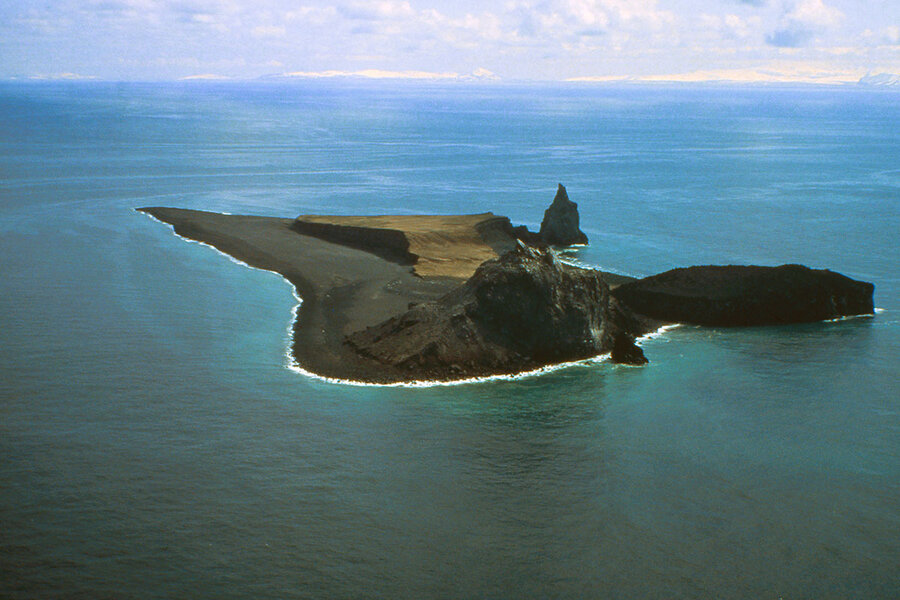Alaska's Bogsolof Volcano continues erupting, disrupting flights
Loading...
Alaska's Aviation Color Code has risen from orange to red, the highest level, in response to a large ash plume from recent eruptions.
Located in the Aleutian islands 850 miles southwest of Anchorage, Alaskan volcano Bogoslof continues a recent string of eruptions, generating ash clouds the Alaskan Volcano Observatory (AVO) says could reach as high as 30,000 feet. Locals report trace amounts of ash fall in the city of Unalaska, where about a dozen flights have been canceled over the last ten days.
"Numerous lightning strikes have been detected in the vicinity of Bogoslof from the resulting volcanic cloud," AVO staff told Alaska Dispatch News. "At (12 a.m. Tuesday), a continuous volcanic plume extends for a distance of 125 miles towards the southeast over Unalaska Island at an altitude of about 20,000 to 25,000 feet."
The volcano has erupted more than two dozen times since mid-December, but the latest explosion was unusually long. Extending over eight hours throughout Monday night, continuous belches evolved into a smooth ejection of ash.
“Monday night’s activity was very interesting," AVO geologist Kristi Wallace told local radio station KUCB. "There were many pulses. It lasted for many hours. So there certainly was some kind of a shift last night, and hopefully we can understand that in the coming hours.”
Now, the ash is dispersing as it moves east over the town of Unalaska. Fortunately, the AVO classifies the less-than-one-millimeter accumulation as "trace to minor".
“No real concerns right now," Wallace said. "It’s probably not more than driving down a dusty road on a dry day.”
But what is a minor problem on the ground can be a major one in the air. Although it might look like fog or snow, ash is made up of crushed rock and glass particles that can wreak havoc on aviation equipment. NASA accidentally flew a plane through Icelandic volcano Mt. Hekla's ash plume in 2000, and while the crew as able to safely land, post-flight diagnostics revealed cooling components stopped up with soot, and engine temperatures hitting temperatures as high as 2,000 degrees Fahrenheit, hot enough to melt ash into glass, according to Popular Science.
When it comes to air traffic, it's better safe than sorry. The 2010 eruption of Icelandic volcano Eyjafjallajökull disrupted more than 100,000 flights and 10 million passengers over the course of eight months. Fortunately, it doesn't look like Alaskan air traffic will experience anything close to that level of interference.
In some places, living with volcanic ash is part of daily life. Japan's Sakurajima erupts every 4 to 24 hours, raining ash down onto neighboring Kagoshima as many as 500 times per year. The city runs municipal ash collection as a class of garbage, and locals sometimes joke about buying grey cars instead of white.
But such measures shouldn't be needed in Unalaska. For now, Bogoslof seems to be settling down. As of Tuesday morning, explosions had stopped and the AVO was no longer detecting the infrasound signals or lighting that indicate further ash ejections.
This report includes material from the Associated Press.








